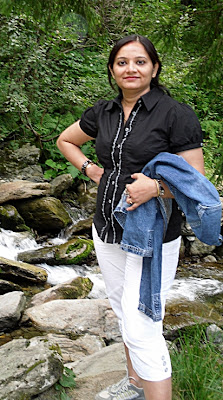‘Passer Domesticus’, which is commonly known as ‘House Sparrow’ is naturally found in most of Asia, Europe & in the Mediterranean region. It is strongly associated with human habitations. Generally, the house sparrow is a chinky bird, typically about 16cm long. They are primarily seed eater though, they also consume small insects. They virtually eat anything in small quantities.
In my childhood, I grew up with varieties of birds in and around me. In our old house, we used to see too many sparrows. Then, I never noticed them minutely & I always ignored them as if, they are part of my life. I spent hours watching other birds from our garden side windows. At different time of the day, variety of birds used to come to our garden with their various activities.
Now years later, I can feel for those chinky tiny sparrows. In Romania, I can find them in & around me whole day long. Initially I used to wonder, how can these birds survive here in winter in such an extreme climate, when the temperature drop to -30 degrees?
Every morning before opening my eyes first, I like to hear chirping of sparrows. They are gregarious at all seasons. After a long & gloomy winter in Romania when spring comes, these social sparrows get back their cheerfulness. Trees start to bloom with new leaves on their branches & I can find the sparrows engaging in a number of social activities, such as dust & water bathing, social singing etc. I also find them carrying twigs, small straws on their beaks.
One day, I saw them mating on my balcony wall and kitchen window sill. I feel happy, thinking that within a few weeks I can see new born chicks on the branches of the trees. Female sparrows are usually smaller than males and younger birds are obviously even smaller.
Males are larger during winter and females are larger during breeding season. Their nests are usually grouped together in clumps. The house sparrows are monogamous. Before the breeding season, unmated males take up a nesting site and call incessantly to attract females.
The house sparrow’s nesting sites are varied but it prefers the shelter of a hole. Nests are more frequently built in the eaves and other crevices of houses. Spring is the time for new born chicks & I can feel their joyfulness. They get rejuvenated since, it is time to breed, bring new lives in the world & gradually they get more busy.
I start giving them more grains on my balcony and watch them from inside the room. They are very small eaters. They eat few grains and fly away to the branches of the tree to rub their beak on the branches or on any hard surface. Whole day long, they chirp and jump from one branch to another, fly from my balcony to others’ windows. I can see their activities on the trees. One day, I saw a mother sparrow feeding her restless hungry chick. I heard the loud incessant chirping of the baby chick, walking restlessly on my balcony wall and watching all around. The mother sparrow came to feed the chick & disappeared to bring more food for her chick.
In summer, when days are very long, I can hear their chirping from early in the morning at 4:30 A.M to late in the evening till 10 P.M. Gradually the days are going to get shorter. Leaves will start falling down. Long extreme cold winter will come. Tree branches will be bare without any leaves and full of snow. Sparrows will still sit there on the icy cool branches of the trees waiting for spring to come.
I cannot understand, when sparrows can survive in such freezing cold (up to -30 degree) during winter in Romania then, why I cannot find a single sparrow in Chennai or its suburbs or in many other parts in India?
Various causes I have found for the dramatic decrease in their population. Electromagnetic radiation mainly from mobile phones, shortage of nesting sites & diseases maybe the prime factors. Protecting insect habitats in farmlands and planting native plants in all cities may benefit the house sparrow & allow them to grow in population.
(Babia Pal she is a teacher and an avid wildlife enthusiast, house wife and conservationist, She has lived and worked in New Delhi and Kolkata. Passionate about playing piano, driving and photography, she loves travelling, reading, writing and painting. She lives in Romania with her husband. She may be reached at babia1@hotmail.com.)































No comments:
Post a Comment
आप के विचार!